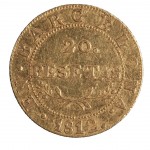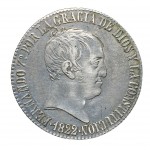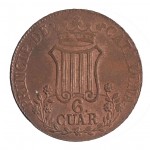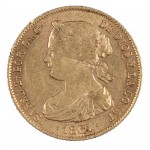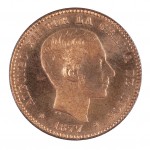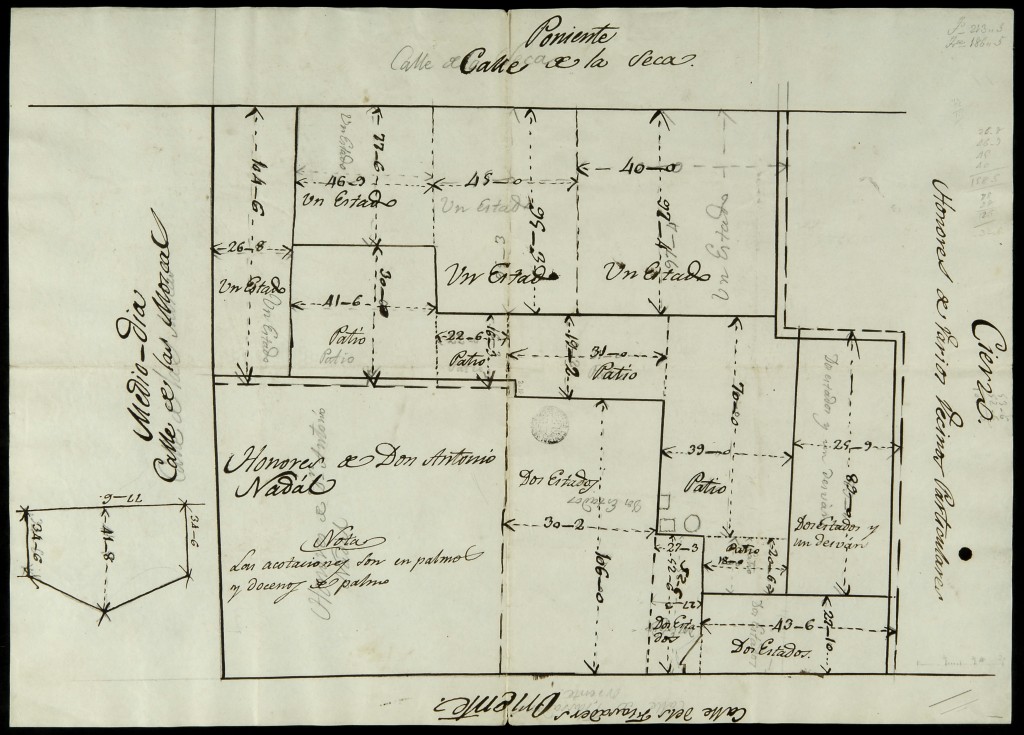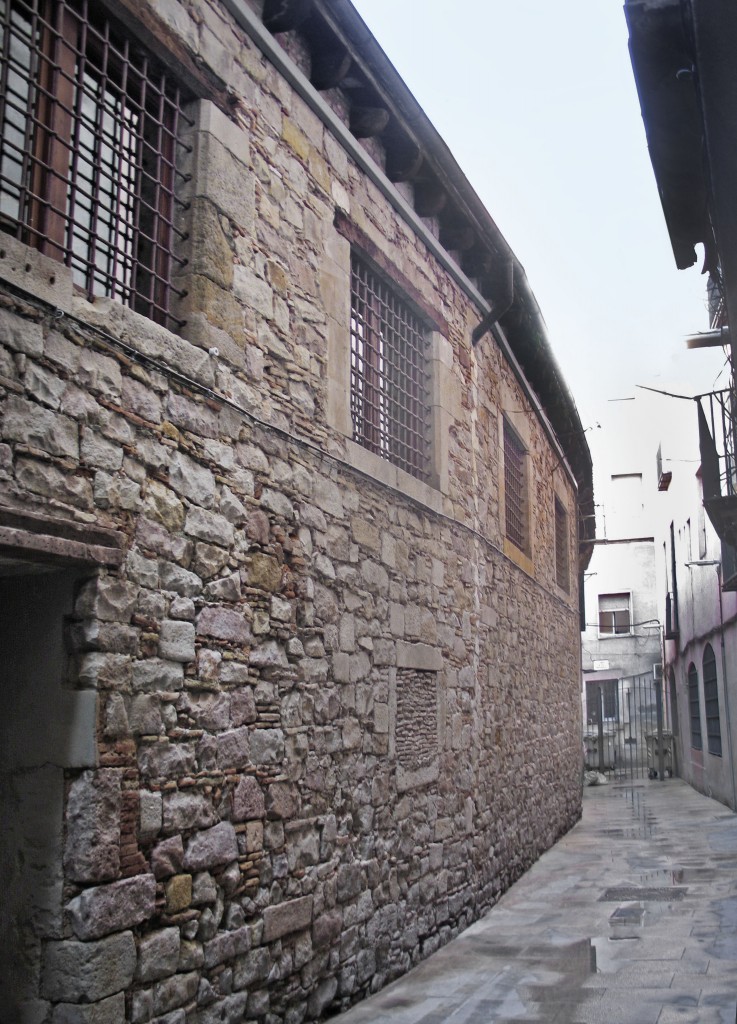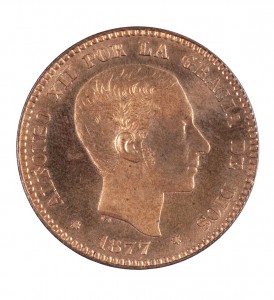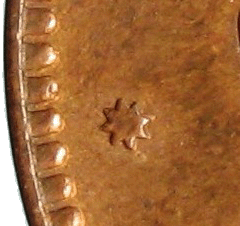Coins minted at la Seca throughout the 19th century: 20 pesetas of the Napoleonic occupation of 1812, back; 20 Reales of Fernando VII of 1822, face; 6 provincial quarters of 1846, back; 100 Reales of Isabel II of 1861, face, and 10 cents of Alfonso XII of 1877, face. Photos: Museu Nacional d’Art de Catalunya
The Mint and its overlapping in the urbanism of Barcelona
The Mint of Barcelona, known also as la Seca, was the place where coins were produced or issued. It has been an institution with a notable continuity and deeply rooted in the city. It was Peter the Ceremonious (1336-1387), always with a vision of high-flying government, who ordered the Mint to have a suitable definitive and institutional headquarters. In the last quarter of the 14th century the order of the King came into being in a townhouse in the street, carrer de les Mosques. In the following centuries, and especially during the Guerra dels Segadors –“The Reapers’ War”– (1640-1652), the neighbouring houses became integrated in a major space bordered by the streets of les Mosques, Flassaders and la Seca.
The archaeological intervention that is being carried out in one of the properties that the Mint occupied for centuries is about to be completed. The excavation, led by the archaeologist Anna Bordas and supervised by the Archaeological Service of the City under the management of Carme Miró, has uncovered material remains, that being unexpected hasn’t made them any less surprising and relevant. But prior to presenting them, we will first focus on the architectural space and its relation with urbanism. Few cities are able to boast the fact of conserving a Mint in the same circumstances as the one of Barcelona. The piece of land which is now excavated only occupies a part of the space that this establishment ended up having, in a growth that would begin in the second half of the 16th century and concluded in 1881. The neighbouring piece of land, occupied by the theatre space called Brossa-La Seca, was the object of two archaeological interventions in 2004 and 2010, but they didn’t give such spectacular results as the current one. There remain, moreover, as an archaeological reserve, two other neighbouring properties, for possible future interventions, completely intact. The future, therefore, is likely to uncover even greater surprises because all this area is the original nucleus of the establishment.
The name of the street La Seca (The Mint) contributes an added value and makes the institution and now its site, to be projected in the field of public urban planning, and leads the pedestrian towards the building in an almost hidden and barely known space. In this location within an urban layout, one should add, moreover, the relation between the streets of Canvis Nous and of Canvis Vells and with Llotja de Mar in the economic and monetary triangle of the medieval and modern Barcelona, always open to the port and to the sea, and right in the centre of the neighbourhood of la Ribera and next to the neighbourhood of the Born.
Some of the coins minted in la Seca, in the Museu Nacional
Over the next few months it will be necessary to carry out the inventory, the restoration and a careful study of all the archaeological material that has been recuperated during the intervention. We are now presenting some pieces that form part of this extraordinary jigsaw puzzle that has been uncovered of its dream of more than a century ago, because when we talk of la Seca we are not limiting ourselves strictly to the site, if not, there is a heritage that has to be identified, ordered and related with the monument so as to contribute to understanding and spreading the complete history of this public establishment, so notable yet forgotten of the city. The part of this heritage which is best known and spread is the part which is strictly numismatic. Not surprisingly it was the coins which were minted in la Seca that passed from hand to hand and circulated everywhere.
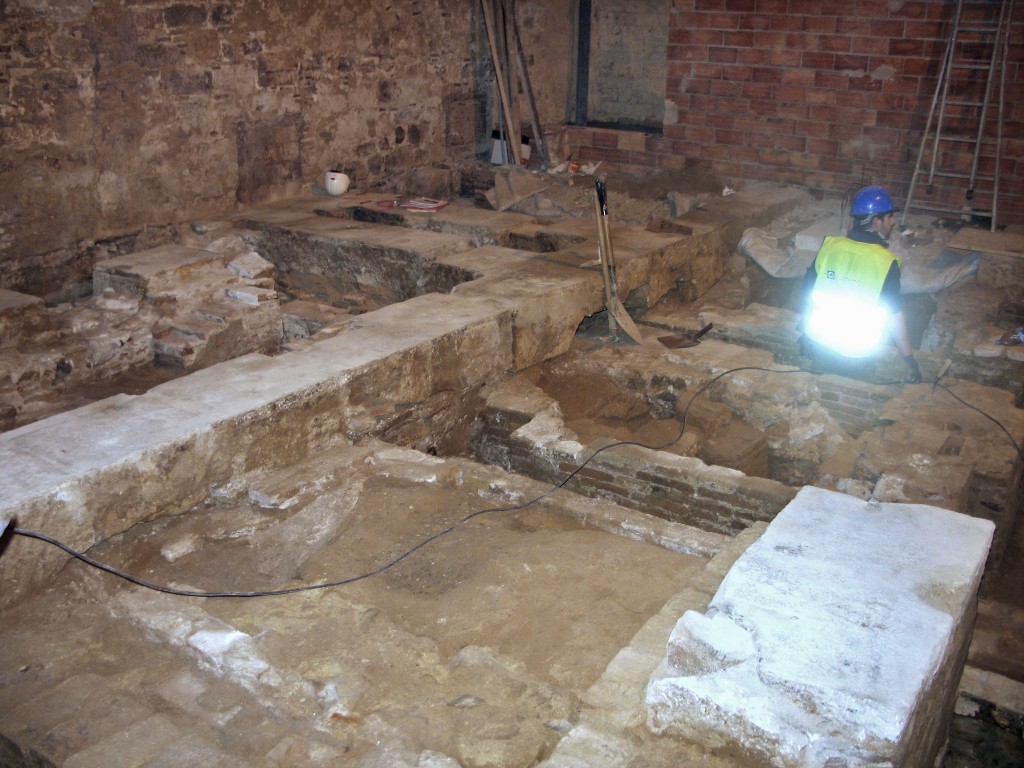
Archaeological intervention on the property of la Seca, in the street of the same name. Photo: Albert Estrada-Rius
While we wait for the inventory and ordering tasks of the archaeological finds to run their course, in the display cases of the numismatic room of the Museu Nacional we can see a complete representation of the series of minted coinage in this historic space. Coins in which, if you observe them carefully, we can find signs that indicate where they were produced, such as different exclusive marks of their minting –a rose, a «B» or a star with eight points–, some of which being heraldic, –the municipal coat of arms in various forms–, or the same of the city itself in the inscriptions.
Face of the coin of 10 cents of Alfons XII, cast in Barcelona el 1877 and the enlargement of the star mark of eight points belonging to this mint. Photos: Museu Nacional d’Art de Catalunya
In the next article we will take a deeper look into the mint of the mid 19th century, a coin factory run on steam, with various minting presses of the model of Thonnelier, constructed in the Barcelona factory of La Maquinista Terrestre y Marítima, in full swing.
Related link
Numismatics Guide, Barcelona, 2004
Gabinet Numismàtic de Catalunya

